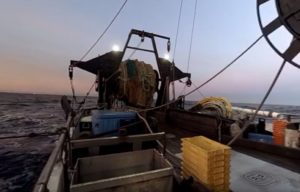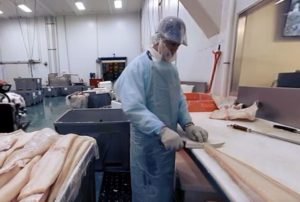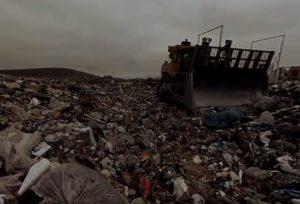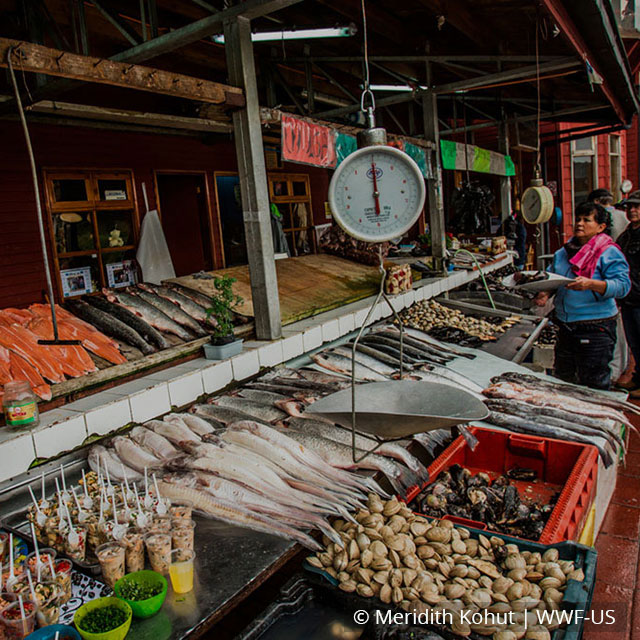Every seafood journey is different, but they’ve got at least one thing in common: they all go through a lot to get to your plate.
According to the Food and Agriculture Organization (FAO) of the United Nations, nearly 90% of the world’s fisheries are harvested right up to or beyond their ecological limits. This means that at best, fisheries are unable to sustainably produce more seafood or, at worst, are on the verge of collapse. As populations and appetites for nutritious protein like seafood grow, we have precious few resources to spare.
And yet, FAO also reports that around 35% of harvested fish and seafood is either lost or wasted along the supply chain—with other studies putting that number closer to 50%. Where does this loss happen?
 Some of it happens out on the ocean. Wherever there is fishing, there is the opportunity for bycatch: Millions of tons of fish, sea turtles, whales, dolphins and other sea creatures are caught unintentionally and then discarded or returned to the sea each year—in many cases because they’re dead, dying or badly damaged or because they’re not marketable. However, it is important to note that in global markets much of this bycatch does make it to market, complicating the ability to measure bycatch-waste accurately.
Some of it happens out on the ocean. Wherever there is fishing, there is the opportunity for bycatch: Millions of tons of fish, sea turtles, whales, dolphins and other sea creatures are caught unintentionally and then discarded or returned to the sea each year—in many cases because they’re dead, dying or badly damaged or because they’re not marketable. However, it is important to note that in global markets much of this bycatch does make it to market, complicating the ability to measure bycatch-waste accurately.
Luckily, proven solutions like alternative fishing gear do exist to reduce bycatch and others are in the works. (Click here to learn more about how WWF works with partners on developing this gear and how to sustainably manage wild fisheries.)
 But bycatch isn’t the only cause of loss. Once a catch lands at dock, it makes a few more stops before reaching your plate, such as processing plants, airplanes, traders, wholesalers, dealers, distributors, and transporters. Along this journey, it must stay cold and controlled through careful preservation and processing techniques to be safe and ready for consumption; if it doesn’t, it can be lost to spoilage at any step—FAO estimates that 27% of fish are lost or wasted between catch and consumption. Often the seafood you eat is frozen when caught and transported, then thawed and marketed as “fresh”.
But bycatch isn’t the only cause of loss. Once a catch lands at dock, it makes a few more stops before reaching your plate, such as processing plants, airplanes, traders, wholesalers, dealers, distributors, and transporters. Along this journey, it must stay cold and controlled through careful preservation and processing techniques to be safe and ready for consumption; if it doesn’t, it can be lost to spoilage at any step—FAO estimates that 27% of fish are lost or wasted between catch and consumption. Often the seafood you eat is frozen when caught and transported, then thawed and marketed as “fresh”.
To help us better envision this long trip, WWF worked with Condition One and Google to bring a seafood journey to life using 360° video and virtual reality (VR). Through this visualization, we are inspired to find solutions and empowered to eliminate waste to fully value the time and energy behind every wild-caught or farm-raised fish we consume.
Supported by Google’s Daydream Impact program and produced by Condition One, the VR project aims to help raise awareness around the challenges facing our oceans using VR video. Short of actually being on a fishing boat or in a processing plant, there’s no better way to understand these issues.
You can experience the video below on YouTube on desktop or mobile–use your mouse or finger depending on your device to move around and explore the scenery around you. For the most immersive experience, view the video on YouTube using a VR viewer like Cardboard or Daydream View.
You can also dive in and explore one sample supply chain with a new Google Voyager – a map-based guided story that casts off from a dock in California and follows the fish on their journey, while exploring loss along the way.
 The amount of seafood we lose each year could help feed millions around the world. The loss and waste of seafood products represents the loss of biodiversity and all the resources (feed, fuel, energy) that were used to grow, transport and refrigerate that fish. By attempting to eliminate seafood waste throughout the supply chain, we can better use what we harvest, increase the availability of nutritious seafood for people around the world, decrease price volatility throughout the supply chain, and potentially increase fishery productivity and profitability.
The amount of seafood we lose each year could help feed millions around the world. The loss and waste of seafood products represents the loss of biodiversity and all the resources (feed, fuel, energy) that were used to grow, transport and refrigerate that fish. By attempting to eliminate seafood waste throughout the supply chain, we can better use what we harvest, increase the availability of nutritious seafood for people around the world, decrease price volatility throughout the supply chain, and potentially increase fishery productivity and profitability.
WWF has targeted reducing waste and loss in seafood supply chains as a critical component to a truly sustainable, responsible private sector engagement strategy. Stay tuned for new blogs and information on our work companies on these initiatives.




